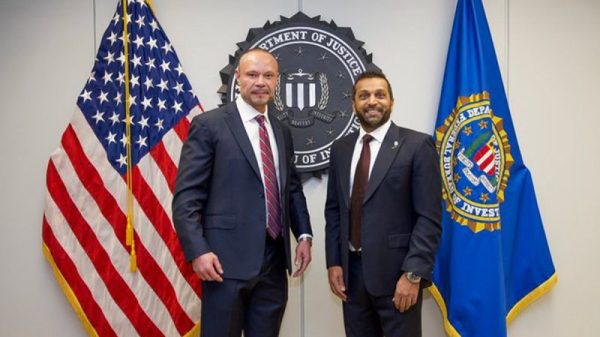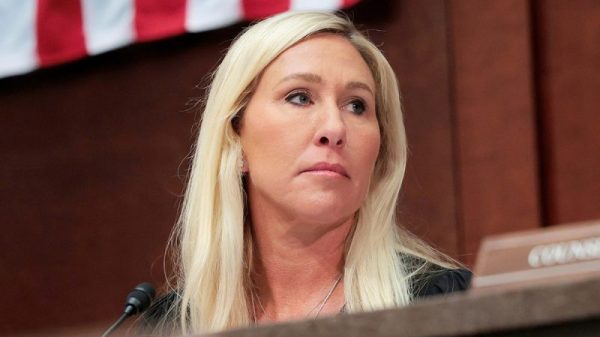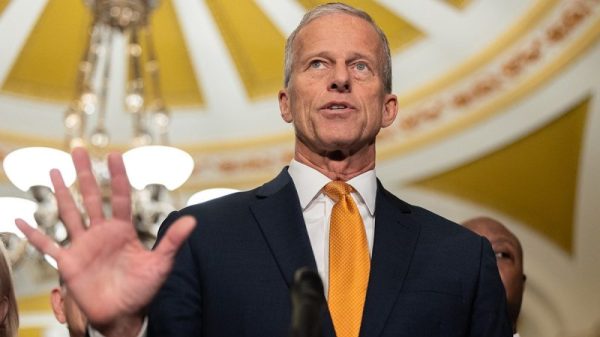In late May, Florida Gov. Ron DeSantis (R) launched his presidential campaign with a slogan promising a “Great American Comeback.”
Two months later, it has become clear that to win the GOP nomination, DeSantis — or anyone not named Donald Trump — will need to register the greatest comeback in modern American primary history.
DeSantis’s deficit in the GOP presidential primaries stands at more than 37 points in the FiveThirtyEight average, with Trump at 53.1 percent and DeSantis at 15.8 percent.
No nominee has made up that kind of gap since the 1970s, which is when the two parties moved away from deciding their presidential nominees at conventions and toward relying on the will of primary voters.
But there have been campaigns that have at least come close, and a look at history could provide hope for DeSantis and the others.
The closest we’ve come to such a turnaround occurred in 2008 and in the 1970s.
In the 2008 Democratic primary, Barack Obama trailed Hillary Clinton by an average of nearly 28 points in October of the off year, before winning one of the tightest delegate races in history.
Somewhat similarly, Sen. George McGovern (S.D.) began his 1972 Democratic primary campaign trailing Sen. Ed Muskie (Maine) by nearly 30 points in the first half of 1971, according to data from FiveThirtyEight. He trailed by nearly 20 points in the second half of that year before pulling off one of the biggest surprises ever.
Four years later, Jimmy Carter also began his campaign as an also-ran who trailed Alabama Gov. George Wallace by nearly 20 points before pulling off the improbable. He even trailed by 25 points as of January 1976, in a Gallup poll.
Beyond those races, we haven’t seen a turnaround that’s close to comparable.
Some analysts have invoked the 2008 Republican primary campaign as an example of how DeSantis could wage a comeback. But John McCain’s largest deficit in that campaign was 18 points, in September of the off year. Four years later, Mitt Romney’s biggest deficit was 13 points.
Bill Clinton’s deficit was in the midteens for much of the off year in the 1992 election. And Joe Biden’s largest average deficit in 2020, a brief one, was 12 points.
Which brings us to Trump himself. Like McCain, he won despite being written off almost completely. But he never trailed by even 20 points in the polling averages — in large part because nobody had that much of the vote.
These historical data come with some caveats. One is that even looking back to the 1970s means we’re dealing with a relatively small sample size. There have been just over a dozen presidential campaigns since then. Unprecedented things can happen in situations such as this.
Another is that the front-runner here isn’t just a front-runner; he is a known-quantity former president, running as something of a de facto incumbent. We just don’t see primary leads this large very often, so it stands to reason that we wouldn’t have seen such a comeback. And there’s an argument to be made that things can fluctuate more wildly in such a scenario — particularly if casual voters who aren’t paying much attention are just falling back on saying they’ll vote for Trump, for now.
History suggests that might be the best argument for the situation changing.
Perhaps the most recent analogue for that kind of setup is the 2016 Democratic primary. Hillary Clinton wasn’t a former president, but she was the readily apparent next in line for Democrats, polling around 60 percent.
Then a long-shot named Bernie Sanders joined the race. Sanders initially trailed by 50 points, and his deficit at precisely this point in the cycle was right around where DeSantis’s is: nearly 40 points. But he gradually chipped away, coming very close to Clinton in the polls once the primaries started and even holding a slight lead in a handful of polls.
It wasn’t enough to win, but it does suggest that the situation can change to the degree DeSantis needs it to, under the right circumstances.
Of course, Clinton wasn’t someone with as much of a lock on her base as Trump has. And Sanders had something important that DeSantis doesn’t: A one-on-one race.
In late May, Florida Gov. Ron DeSantis (R) launched his presidential campaign with a slogan promising a “Great American Comeback.”
Two months later, it has become clear that to win the GOP nomination, DeSantis — or anyone not named Donald Trump — will need to register the greatest comeback in modern American primary history.
DeSantis’s deficit in the GOP presidential primaries stands at more than 37 points in the FiveThirtyEight average, with Trump at 53.1 percent and DeSantis at 15.8 percent.
No nominee has made up that kind of gap since the 1970s, which is when the two parties moved away from deciding their presidential nominees at conventions and toward relying on the will of primary voters.
But there have been campaigns that have at least come close, and a look at history could provide hope for DeSantis and the others.
The closest we’ve come to such a turnaround occurred in 2008 and in the 1970s.
In the 2008 Democratic primary, Barack Obama trailed Hillary Clinton by an average of nearly 28 points in October of the off year, before winning one of the tightest delegate races in history.
Somewhat similarly, Sen. George McGovern (S.D.) began his 1972 Democratic primary campaign trailing Sen. Ed Muskie (Maine) by nearly 30 points in the first half of 1971, according to data from FiveThirtyEight. He trailed by nearly 20 points in the second half of that year before pulling off one of the biggest surprises ever.
Four years later, Jimmy Carter also began his campaign as an also-ran who trailed Alabama Gov. George Wallace by nearly 20 points before pulling off the improbable. He even trailed by 25 points as of January 1976, in a Gallup poll.
Beyond those races, we haven’t seen a turnaround that’s close to comparable.
Some analysts have invoked the 2008 Republican primary campaign as an example of how DeSantis could wage a comeback. But John McCain’s largest deficit in that campaign was 18 points, in September of the off year. Four years later, Mitt Romney’s biggest deficit was 13 points.
Bill Clinton’s deficit was in the midteens for much of the off year in the 1992 election. And Joe Biden’s largest average deficit in 2020, a brief one, was 12 points.
Which brings us to Trump himself. Like McCain, he won despite being written off almost completely. But he never trailed by even 20 points in the polling averages — in large part because nobody had that much of the vote.
These historical data come with some caveats. One is that even looking back to the 1970s means we’re dealing with a relatively small sample size. There have been just over a dozen presidential campaigns since then. Unprecedented things can happen in situations such as this.
Another is that the front-runner here isn’t just a front-runner; he is a known-quantity former president, running as something of a de facto incumbent. We just don’t see primary leads this large very often, so it stands to reason that we wouldn’t have seen such a comeback. And there’s an argument to be made that things can fluctuate more wildly in such a scenario — particularly if casual voters who aren’t paying much attention are just falling back on saying they’ll vote for Trump, for now.
History suggests that might be the best argument for the situation changing.
Perhaps the most recent analogue for that kind of setup is the 2016 Democratic primary. Hillary Clinton wasn’t a former president, but she was the readily apparent next in line for Democrats, polling around 60 percent.
Then a long-shot named Bernie Sanders joined the race. Sanders initially trailed by 50 points, and his deficit at precisely this point in the cycle was right around where DeSantis’s is: nearly 40 points. But he gradually chipped away, coming very close to Clinton in the polls once the primaries started and even holding a slight lead in a handful of polls.
It wasn’t enough to win, but it does suggest that the situation can change to the degree DeSantis needs it to, under the right circumstances.
Of course, Clinton wasn’t someone with as much of a lock on her base as Trump has. And Sanders had something important that DeSantis doesn’t: A one-on-one race.





















